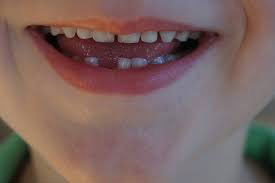Not so sweet effects of sugar
Dr. Gita Mathai explains the toxic effects of high sugar consumption on children’s health and recommends permissible limits for different age groups.

Most parents are well acquainted with the dangerous effects of excessive sugar intake — dental caries, metabolic syndrome, obesity, etc — on children’s health and well-being. Nevertheless they tend to be careless about monitoring and regulating sugar consumption in growing children. Understanding the detrimental consequences of unrestrained sugar intake will prompt parents to monitor their children’s diets and make the necessary improvements.
Sugar is a refined carbohydrate that is processed in sugar factories. It has no nutritional value, proteins, vitamins or minerals and provides ‘empty calories’ with no health benefit to the body. Moreover, it is an acquired taste. Infants and young children don’t naturally have a penchant for sweets. But when parents feed them sweetened juices, cereals, biscuits and other processed food, they develop a taste for sugar. Infants who don’t consume added sugars till age one are less likely to develop a sweet tooth later in life.
ADVERSE EFFECTS
 The most common outcome of excessive sugar consumption in children is dental cavities. If the mouth is not rinsed properly after a meal, bacteria thrive, multiply, attack tooth enamel and cause dental caries. This is the most common cause of hospital visits and ill health during childhood.
The most common outcome of excessive sugar consumption in children is dental cavities. If the mouth is not rinsed properly after a meal, bacteria thrive, multiply, attack tooth enamel and cause dental caries. This is the most common cause of hospital visits and ill health during childhood.
Moreover, sugar is rapidly digested and absorbed into the blood stream. The liver senses excess sugar in the blood and promptly converts it into triglycerides (fat). Some of the fat gets stored in the liver itself, gradually transforming into a ‘fatty liver’, while the rest is deposited in the abdomen around the intestine and abdominal organs as visceral fat. This, in turn, contributes to insulin resistance and hampers blood sugar regulation, leading to MODY (Maturity Onset Diabetes of the Young) among adolescents.
In addition, some children can also develop ‘metabolic syndrome’, which includes hyperglycemia, insulin resistance, obesity and dyslipidemia (deranged lipid profile). It predisposes them to suffer atherosclerotic cardiovascular disease and Type 2 diabetes, later in life.
Consumption of large amounts of refined sugar (for example a chocolate bar or many toffees) leads to a rapid rise in blood sugar. The child’s body immediately responds to this by secreting insulin, and the sugar level drops. This precipitous fall in sugar level may result in lethargy and sleepiness.
FACT OR FICTION
While the toxic effects of sugar on the health and well-being of children and adults are proven beyond doubt, there are some myths surrounding high sugar consumption. Many parents erroneously believe that rapid ingestion of large amounts of sugar leads to disobedience and hyperactive behaviour among children.
This effect, commonly known as sugar high, is an unproven urban myth. Several placebo-administered, controlled, double blind studies have failed to substantiate this theory. Sometimes children do behave outrageously when they consume surplus sugar in the form of snacks, beverages or ice cream, but this can be attributed to adrenalin rush or preservatives and colouring present in these snacks, which have been proven to trigger hyperactive behaviour.
SAFE SUGAR
All packaged juices, aerated drinks, and snacks such as bread, biscuits, and pastries pack in excess grams of sugar. On the other hand, whole grains, fruits and vegetables are complex carbohydrates which contain sugar but take time to digest and get assimilated in the body and produce a sense of satiety, reducing chances of overeating.
Children who eat traditional Indian breakfast foods including dosas, idlis, poha and upma (daliya) instead of processed cereals, jam, etc remain energetic throughout the day. The market is flooded with pre-cooked, pre-packaged, ready-to-eat cereals. If the labels are carefully studied, you will realise that they contain the entire day’s sugar quota (see box). With this diet, before mid-day, children would have exceeded their sugar quota for the day!
With young children placing their full trust and faith in parents, it is imperative that they make informed and healthy food choices for their young ones. Most diseases and ailments including diabetes and obesity can be avoided by following healthy diets and active lifestyles from early age.
How much is too much?
The maximum permissible level of sugar intake has been scientifically calculated.
• Preschoolers: 5 teaspoons of sugar a day
• Teenagers: 7 teaspoons a day
• Adults: 9 teaspoons a day
Sweetness check
• 1 cream biscuit (12 gms weight) has 5 teaspoons (23 gms) of sugar. (Children often eat a whole packet in one sitting)
• A sweetened fizzy drink contains 10 gms (2 ½ teaspoons in 100 ml)
• Tomato sauce contains 5 gms in 100 ml
• One chocolate eclair toffee contains 3 gms of sugar
(Dr. Gita Mathai is a Vellore-based paediatrician and author of Staying Healthy in Modern India)
The article was published in the print version of ParentsWorld October 2017 issue.















Add comment